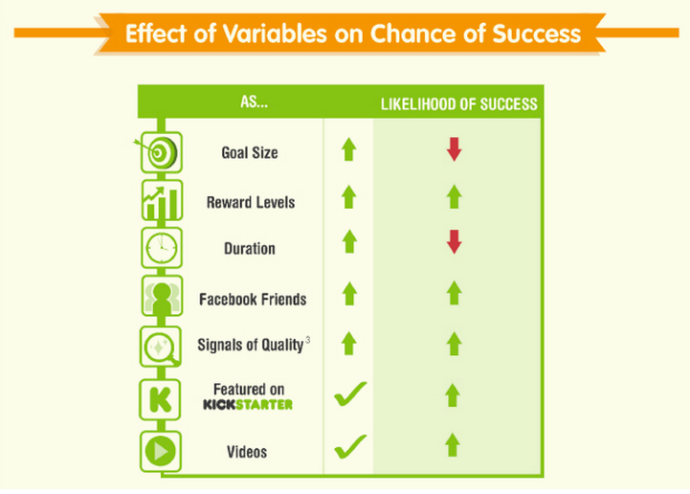Contributed by Shaun Lee, Founder and President of Truckin’ Tomato
Introduction to Crowdfunding
Many entrepreneurs start out with a big idea and a small bank account. This is where investors come in. The process usually involves something that falls between a sales pitch and outright begging, and if the investor buys into your dream, they’ll invest in it. The alternative is to raise the money yourself, usually by going to 500 of your closest friends with your hat in your hands. Recently, however, a new option has presented itself. Crowdfunding. This is where strangers – total strangers – donate small chunks of money here and there after watching your super compelling 2-5 minute explainer video and realizing how much they need your product.

It should also be noted that you can’t crowd fund for general purpose business expenses. You have to have a specific goal in mind. For example; the launch of a new product, the opening of a new location, the release of your first album. These are all acceptable. Keeping the lights on; not so much. Still, you have a great product or service, so you create a campaign. You promise potential investors they’ll get their hands on the first batch of products off the conveyor belt, AND you’ll throw in a high quality bumper sticker to sweeten the deal, and they line up to buy in their thousands! … or do they?
I can tell you from personal experience… this isn’t always (or even usually) the case.
My Crowdfunding Experience
I’m unfortunately well positioned to tell you about the difficulties of crowdfunding, and I’m not in the minority, either. According to VisionLaunch.com, only 43.4% of Kickstarter campaigns meet their goal. Kickstarter is more restrictive than other platforms like Indiegogo, which allows Flexfunding, meaning that founders may not meet their goal, but might still accumulate enough to get their business rolling. Bearing that in mind, Indiegogo’s success rate is quite ambiguous, but falls nearer to 10%. As for my own experience, one thing that surprised me was that the donations didn’t come in small quantities. In my case, instead of numerous little loans I received a few more chunky ones. In an image below we’ll find out that the average donation a successful campaign receives is $87, far more than the $5-$10 I would have expected. Either way, in my case it wasn’t enough. Safe to say, I was in the “didn’t meet their goals” bracket, and crowdfunding overall left a bit of a bad taste in my mouth. This isn’t “easy money” by any means, and after my experience I was just about ready to write off crowdfunding.
But, in the interest of fair reporting, and providing something of value to the Entrepreneurial community, lets take a look at the other side of the coin.
Case study: A Successful Crowdfunding Campaign
A lot of crowdfunding campaigns ARE successful, especially when they know how to motivate the masses! A projected total of $4.35B will have been pledged by the end of 2015 on just two of the most popular crowdfunding sites, Kickstarter and Indiegogo. I recently had the pleasure of meeting someone with a crowd funder who had the opposite experience, successfully meeting her goal in just two weeks. Veronika Scott of empowermentplan.org invented and crowdfunded “The EMPWR Coat”, a wearable sleeping bag that has had a very real impact on the homeless community in Detroit, and although our encounter was brief, it left me with a bit of a revelation regarding crowdfunding. Don’t create a campaign hoping that it will build an audience for you. Veronika is a prolific blogger with big following (even bigger now!) both on her blog and on social media. On top of that, she had a fantastic idea that made an impact on many levels, providing shelter/warmth for the homeless, and numerous jobs for the Detroit community. It’s pretty clear that although crowdfunding gave her a nudge, success was always on the cards for Veronika.
Here’s a simple chart showing the effect of certain variables on your chances of success:

So what can we learn from these experiences?
After reviewing Veronika’s experience and researching the factors that lead to success and failure for many crowdfunding campaigns, I’ve put together some characteristics to create a successful campaign. I’ll also be drawing some fantastic information from a couple of really great infographics I discovered in my research. These resources have compiled some neat statistics on crowdfunding campaigns, and what is required in order to succeed.
Click here for 7 Steps to Crowdfunding Success.
We love stories and would like to hear from you!
Why not tell us about your own crowdfunding adventures? Please do so, either in the comments below, or by submitting a guest post to us. We review these posts carefully, and as long as your contribution adds something to the entrepreneurial community we’d be happy to feature it on our site with a link back to yours!




[…] platform to raise precious funds. Crowdfunding is basically a really technologically boosted way of fundraising. It gives you an amazing array and outlet to a variety of investors, and it provides this service […]